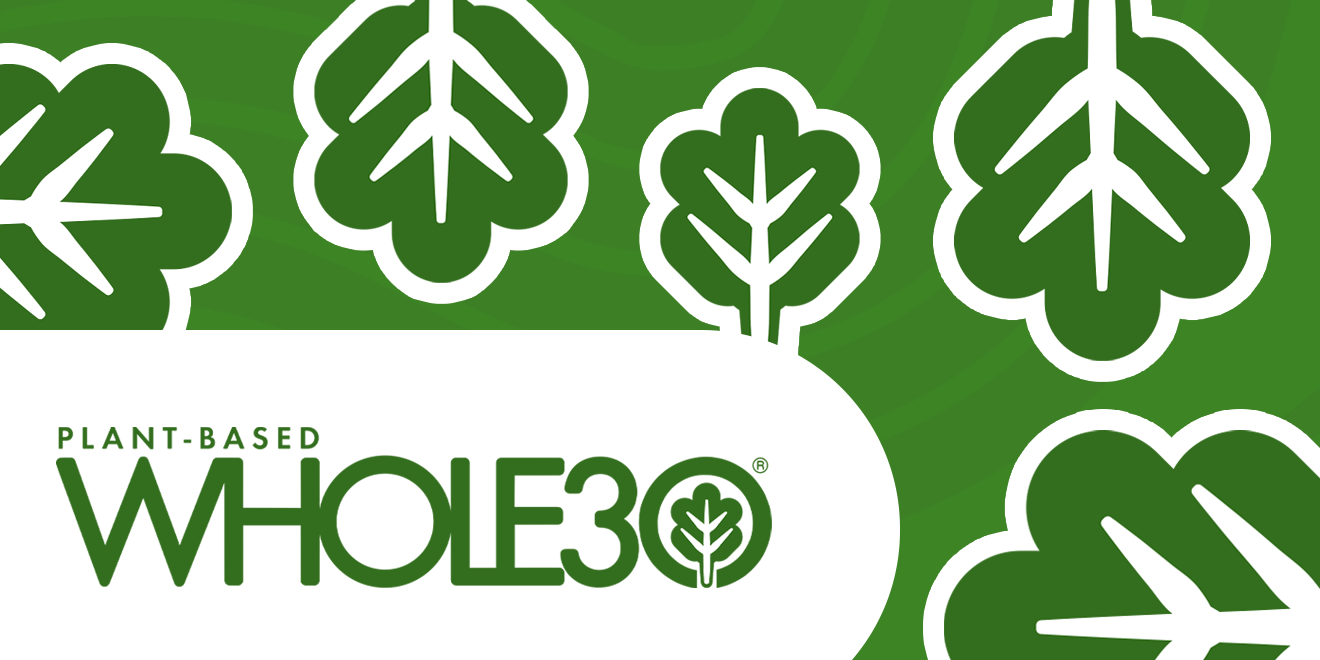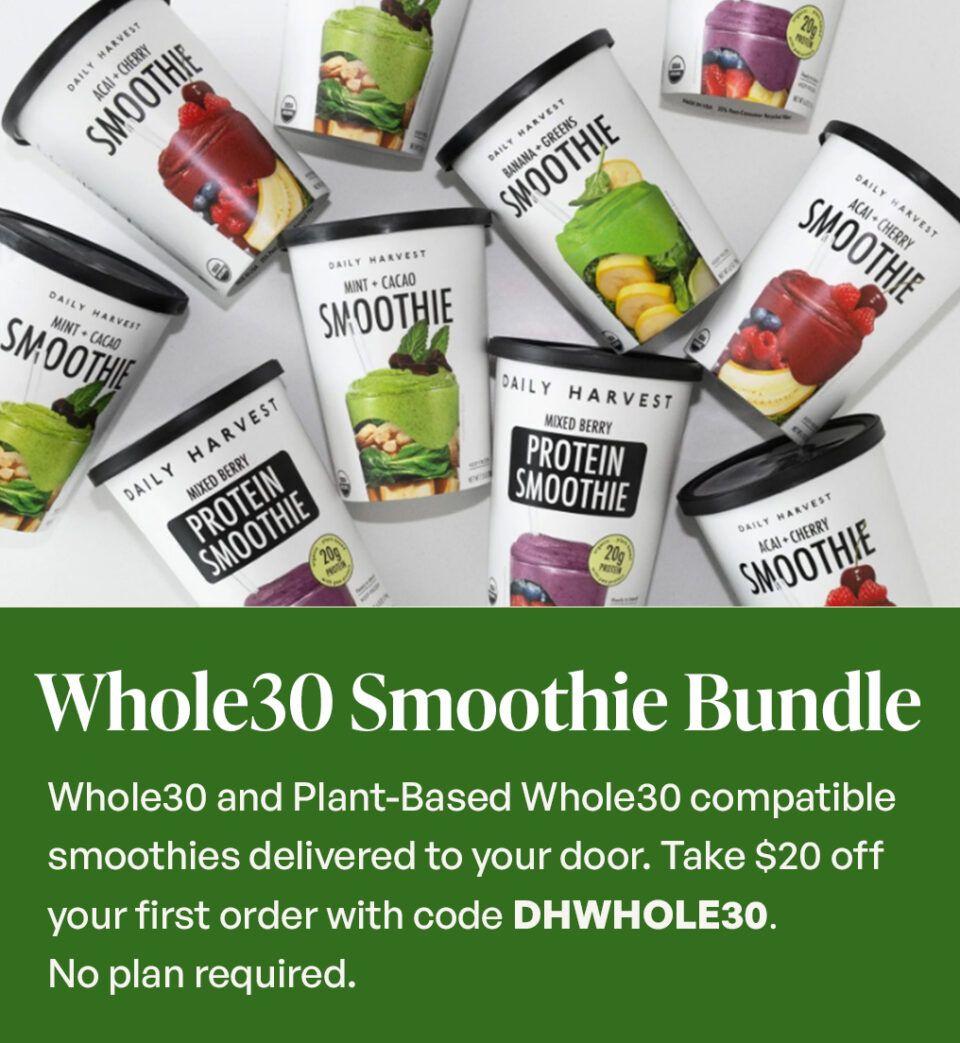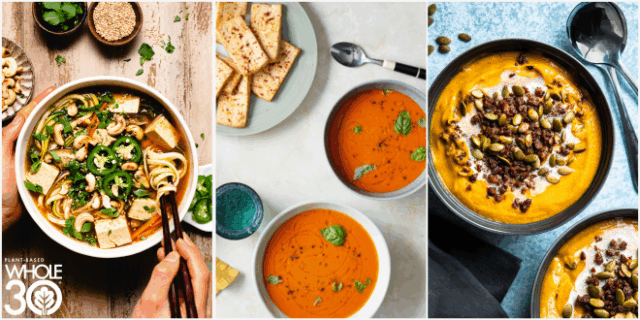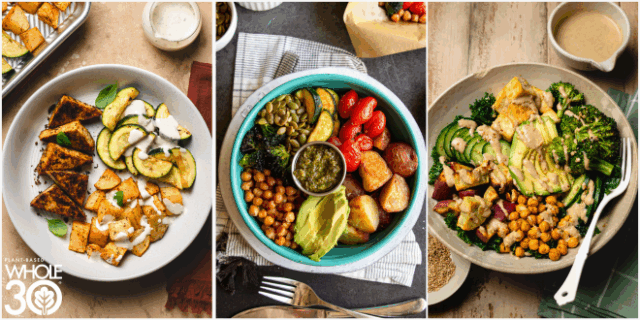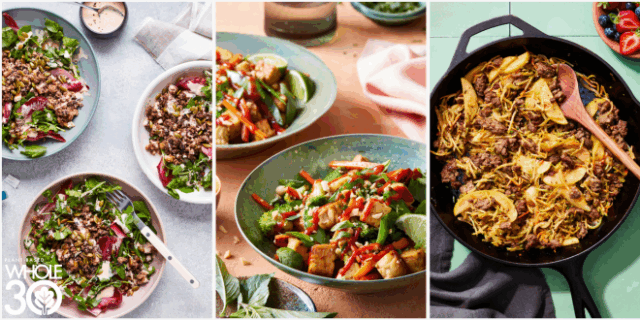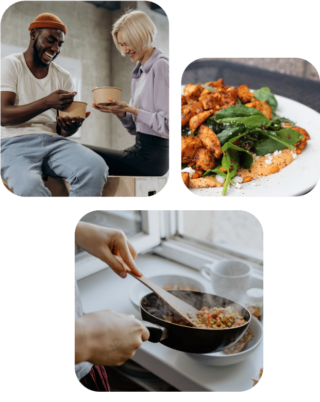“Beans, beans the magical fruit.” You might know the rhyme, but they aren’t fruit at all. They’re a delicious, fiber-loaded, plant-based protein that can be enjoyed throughout your Plant-Based Whole30. Beans are a staple in a plant-based diet, and in this article, we’ll share how to eat beans and the best preparation methods.
What are beans?
Commonly, people refer to beans as anything with “bean” in the name or anything that looks like a bean. But beans are their own group of foods. They are classified as the seeds of the plants from the legume family.
Examples are black beans, garbanzo beans, kidney beans, pinto beans, edamame (soybeans), and so many more. In this post, “beans” will refer to these types unless otherwise noted—sorry, green beans!
While we’re on the topic—though green beans are nutritious and are called beans—they don’t belong to the legume family. They are just slightly different in terms of classification. Green beans are a non-starchy vegetable. So let’s focus instead on how to eat beans in the legume family during your Plant-Based Whole30.
How to prepare beans?
Beans are an affordable, easy-to-prepare item for your Plant-Based Whole30. Most beans come either dried or canned. The preparation method you choose depends on the type of beans you get. Dried beans are more cost-effective, but require a little more work. Canned beans are faster to prep, but cost more per ounce.
Either bean will work and mostly depends on your preference, budget, and available resources.
Preparing dried beans
Dried beans are the most affordable option. These can be found in the aisle with dry goods, possibly next to the chia seeds or rice. Dried beans are shelf-stable and can last for about a year in your pantry.
To prepare them, you only need dried beans and water (or vegetable broth for more flavor). During cooking, dried beans double—sometimes triple—in size. To make a one cup serving, only ½ cup of dried beans are needed.
Before cooking the beans, rinse them with water. Then, soak in about four cups of water for at least four to six hours. Soaking beans helps remove some of the oligosaccharides (complex carbs) that may cause gas. The soak also helps make nutrients like iron more bioavailable, giving you more nutrition for your buck.
If you’re worried about gas and bloating, soaking beans is a step I wouldn’t skip. If you’re short on time and still want to enjoy beans, opt for canned beans. You can enjoy them quickly with less risk of gas or bloating.
Bonus Tip: Want to learn more about soaking and sprouting? We’ve got your next read: The Beginner’s Guide to Soaking and Sprout Beans, Lentils, Nuts, and Seeds.
After the beans have soaked, add them to a pot with 1-2 cups of water (or until they are covered with about 2-3 inches) and cook them based on the package directions. The type and size of the bean can influence the cooking time.
Preparing canned beans
Canned beans are the quickest and easiest way to enjoy beans. Using a canned option cuts cooking time by over half because they’ve already been soaked and blanched before canning. Canned beans are just as healthy as dried beans and still have the same fiber, vitamins, minerals, and plant protein.
Some canned beans have salt added, and some do not. You can opt for low-sodium varieties, or if you have regular, salted beans, the sodium content may decrease by about 40 percent when you drain and rinse the beans during preparation.
You don’t have to drain and rinse, but it’s highly recommended for the best outcome. Once the beans are ready for the next step, all you have to do is heat and eat. You can cook them in a pan on the stove or add directly into a recipe to heat with the rest of the ingredients.
Canned beans are simple to use and great for getting started with bean cooking.
Common varieties, and how to eat beans
Beans come in all shapes, sizes, and varieties. They have similar nutrition profiles and are prepared in the same way. In this section, we’ll highlight how to eat beans and recipes you can use on your next meal plan. If you’re not the meal-planning type, that’s okay. You can use a tool like Real Plans to make a meal plan for you—and yes, they have all types of beans!
These are some common options you’ll see throughout the Plant-Based Whole30.
Refried beans
Refried beans are a creamy and delicious way to serve pinto beans. During the Plant-Based Whole30, check refried beans for non-plant-based ingredients like lard. Vegetarian refried beans are a good option and will never contain lard. Siete has a line of refried pinto and black beans that are delicious!
One of our favorite recipes with refried beans is the Plant-Based Whole30 7-Layer Dip. It’s the perfect dish for any sporting event and adds 15 grams of fiber and 13 grams of protein per cup to the snack table.
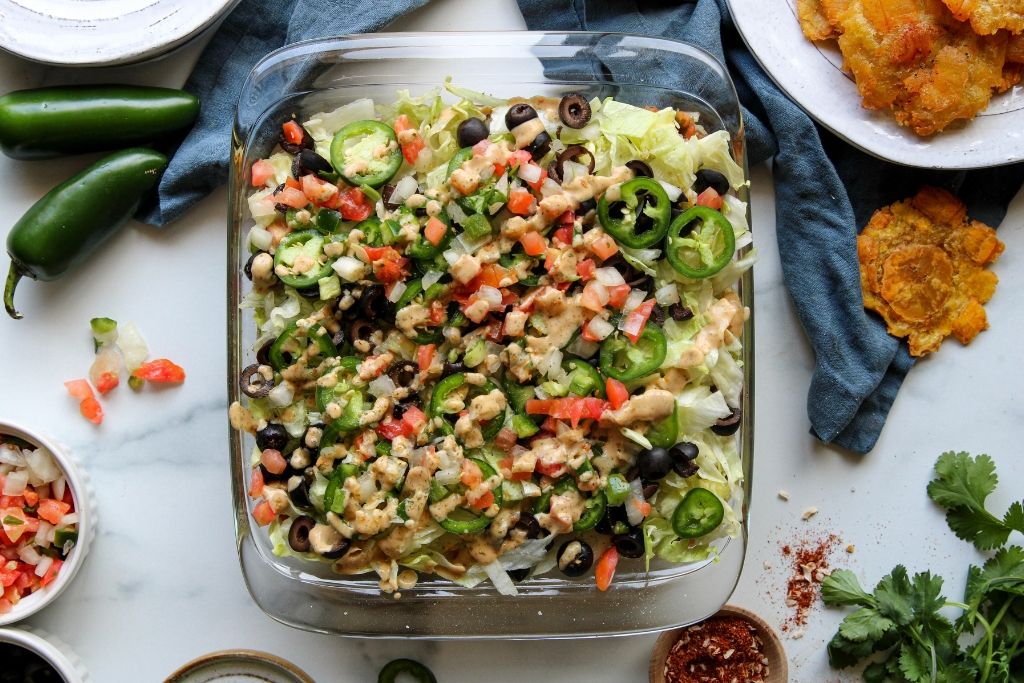
White beans
White beans are another staple that are creamy and have a versatile flavor. Common white bean varieties are navy, great northern, and cannellini. One cup of cooked white beans has around 19 grams of fiber and 17 grams of plant protein. They are also one of the higher iron beans.
Some tasty recipes that use white beans are Plant-Based White Bean Chili from The New Whole30, Lemon Dill Bean Soup, and our Creamy Chickpea Tomato Curry.
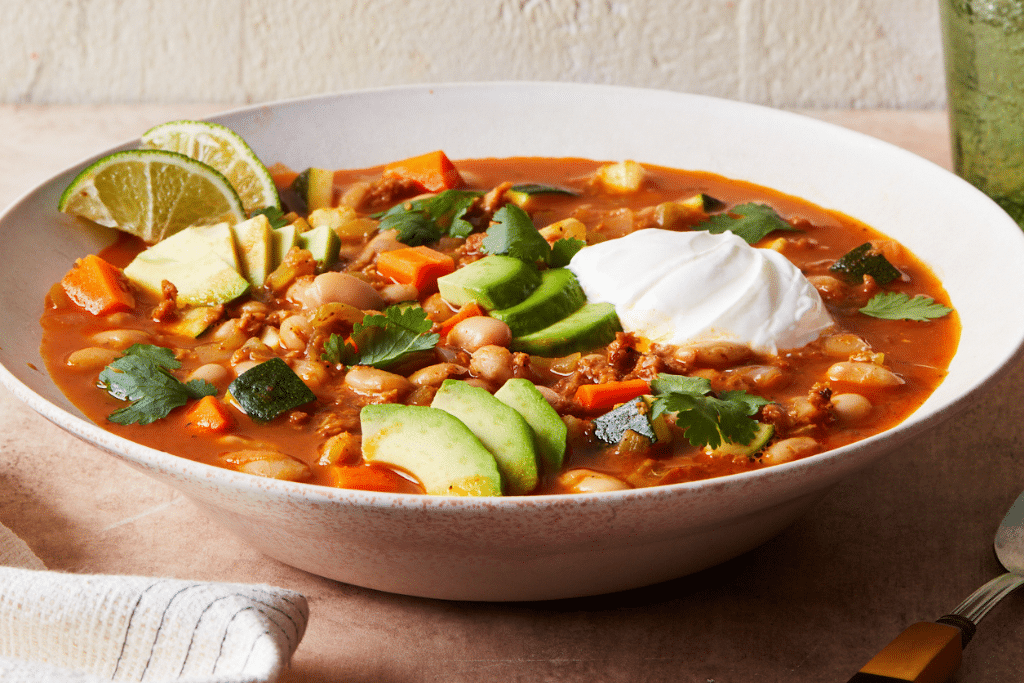
Black beans
Black beans are a classic go-to for soups, salads, tacos, and stew recipes. The taste is slightly earthy and savory, making it a perfect plant-based meat replacer. One cup provides 15 grams of protein and 15 grams of fiber, making it a great pick for reaching your nutritional goals.
Here are some of our favorite creative ways to use black beans:
- Black Bean and Sweet Potato Salad
- Sweet Potato and Black Bean Burger Bites Square
- Plant-Based Whole30 Sweet Potato Chili
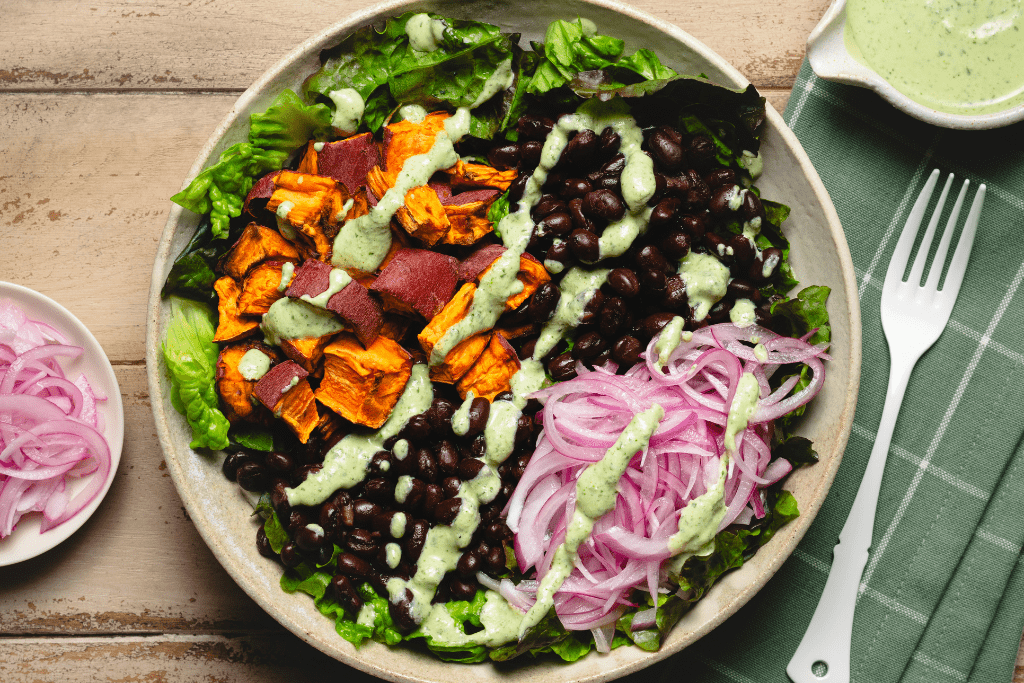
Mung Beans
You know that famous vegan egg replacement that doesn’t quite meet the Plant-Based Whole30 standards? It’s made from mung beans. And the beans themselves can be used to make homemade vegan eggs and recipes like our Savory Pakoda “Waffles,” added to stir fries or even sprouted.
A one-cup serving has 15 grams of fiber and 14 grams of protein, making them a great choice for any plant-based meal.

Edamame
Edamame is a young soybean that is perfect for meals or even snacking. Most commonly, edamame is enjoyed steamed or boiled, which is slightly different from other legumes. In a one-cup serving, there are eight grams of fiber and around 18 grams of plant protein, making them a high-protein choice.
Edamame are found in recipes for stir fries, salads, dips and more. Some of our favorites are Plant-Based Coconut Spiced Edamame, Plant-Based Whole30 Sushi Bowls, and Plant-Based Sesame Edamame Salad.
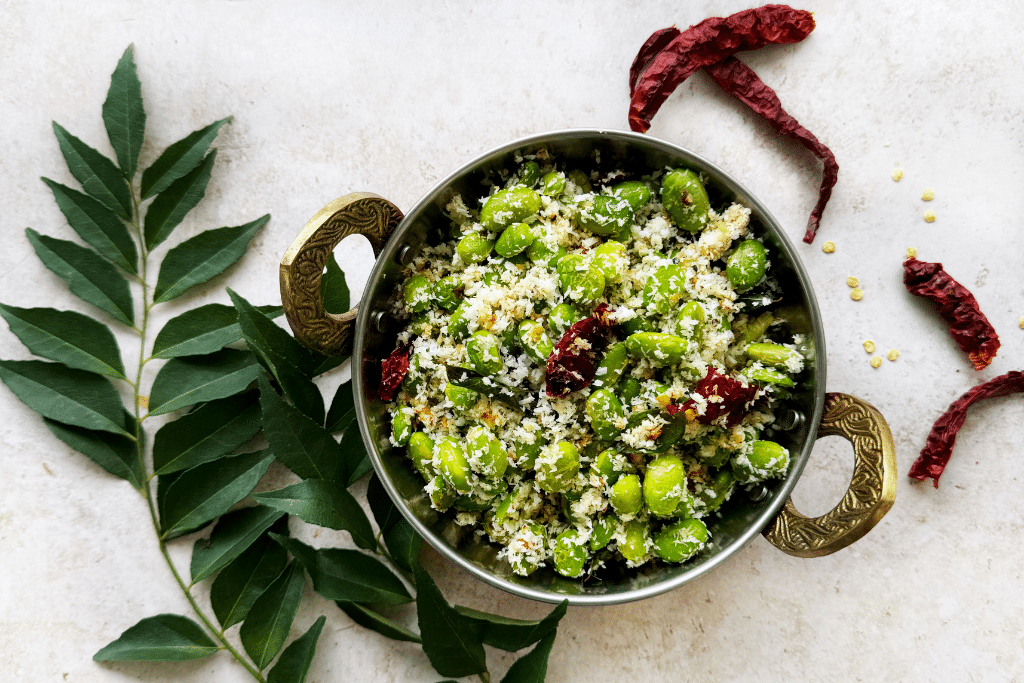
Garbanzo Beans (Chickpeas)
Garbanzo beans, often called chickpeas, are one of the most versatile beans. Because of their neutral flavor they appear in many recipes and also are perfect for “hiding” in recipes like smoothies and dips to increase the fiber and protein counts. One cup has 14 grams of protein and 12 grams of fiber.
Our favorite chickpea recipes are Plant-Based Caesar Bowl with Crispy Chickpeas, Creamy Chickpea Tomato Curry, and Chickpea, Tomato, and Veggie Skillet.
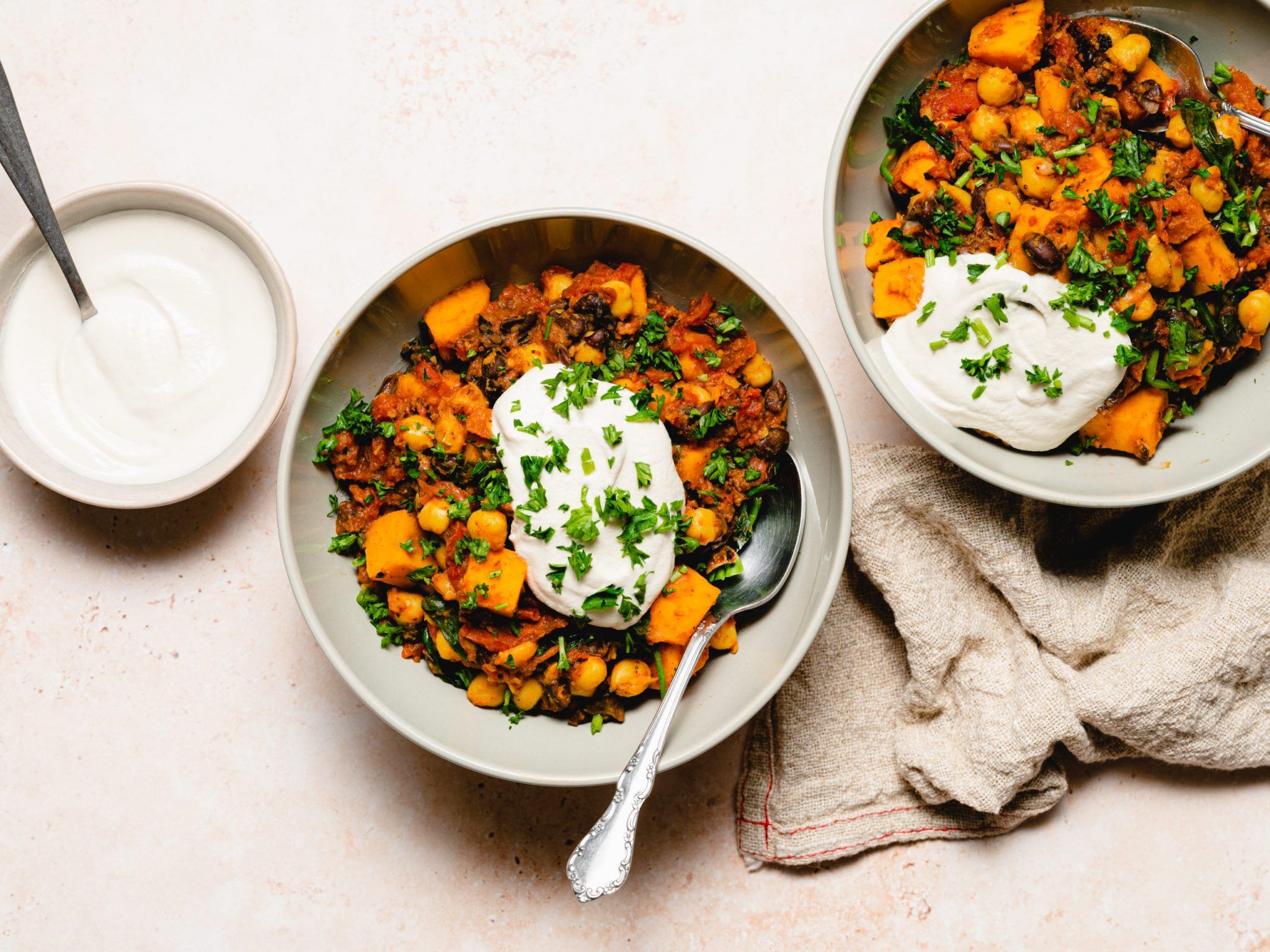
Spilling the beans
Most Americans are low in fiber across the board. Adding beans can help bridge that gap easily because they are fiber-loaded. In one cup, there are 10-15 grams of fiber, helping meet the dietary guidelines of 25 grams per day for women and 38 grams daily for men.
Additionally, on average, one cup of beans has around 15 grams of plant protein, making them an ideal choice to help reach your protein goals.
Eating beans is a great way to add vitamins and minerals into your diet. And, as you’ve seen, there are many ways to eat beans. They are a versatile ingredient and a great addition to your Plant-Based Whole30 to help you feel full and stay sated after meals.
Challenge yourself this next week to try eating beans in at least one new way, and let us know what you tried!

